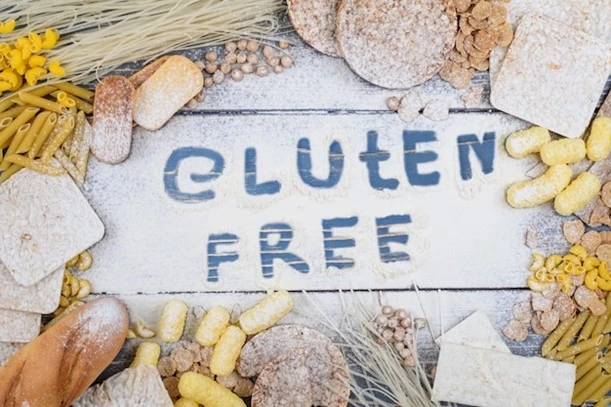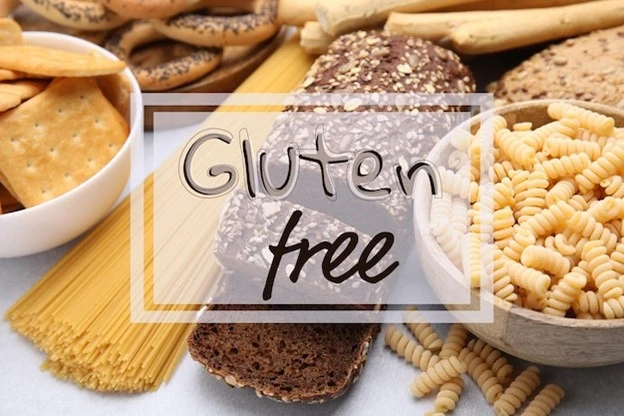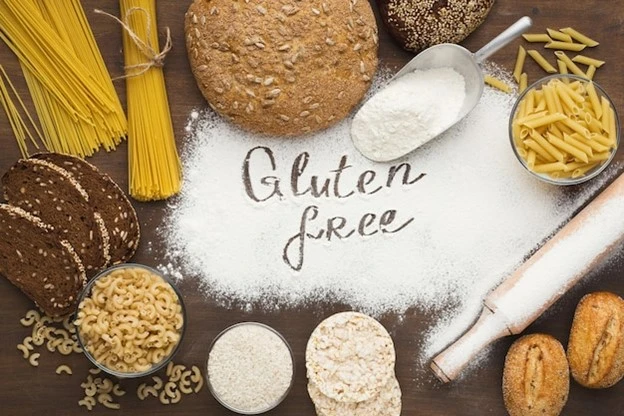In a world where food choices are abundant but often riddled with hidden allergens, embracing a diet centered on gluten and dairy free foods can be a game-changer for your health and well-being. Whether you’re dealing with intolerances, aiming to reduce inflammation, or simply exploring healthier eating habits, transitioning to this lifestyle can have profound benefits. This article serves as your ultimate guide to understanding, sourcing, and incorporating gluten and dairy-free foods into your daily life without compromising on flavor or nutrition.
What Are Gluten and Dairy Free Foods?
Gluten is a protein found in grains like wheat, barley, and rye, while dairy encompasses milk and products derived from it. Gluten and dairy free foods exclude these components, focusing instead on naturally gluten- and dairy-free ingredients such as fruits, vegetables, legumes, and alternative grains.
The growing awareness of food sensitivities has led to a surge in the availability of gluten lactose free foods, catering to individuals with dietary restrictions and those seeking a cleaner, allergen-free diet.
Why Choose Gluten and Dairy Free Foods?
The decision to adopt a diet featuring gluten and dairy free foods often stems from health concerns, but the benefits can extend to anyone. Here’s why many opt for this lifestyle:
- Improved Digestion: Eliminating gluten and dairy can ease bloating, gas, and other digestive discomforts.
- Reduced Inflammation: Gluten and dairy are known to exacerbate inflammation in sensitive individuals.
- Better Energy Levels: Avoiding these foods may lead to reduced fatigue and improved mental clarity.
- Clearer Skin: Cutting dairy, in particular, has been linked to fewer acne breakouts.
- Weight Management: Whole, unprocessed gluten- and dairy-free options often support healthier eating habits.
Naturally Gluten and Dairy Free Foods

When building a gluten- and dairy-free diet, focus on whole, minimally processed foods that naturally align with your dietary needs.
Fruits and Vegetables
- Fruits: Apples, bananas, berries, oranges, and melons are all nutrient-rich and naturally gluten- and dairy-free.
- Vegetables: Leafy greens like spinach and kale, cruciferous veggies like broccoli and cauliflower, and root vegetables like carrots and sweet potatoes make excellent staples.
Grains and Pseudograins
Replace traditional wheat-based products with these gluten and dairy free foods:
- Quinoa: A high-protein grain that’s versatile and easy to cook.
- Rice: Available in white, brown, or wild varieties.
- Buckwheat: Despite its name, it’s gluten-free and rich in nutrients.
- Millet and Sorghum: Lesser-known grains packed with fiber and essential minerals.
Proteins
Protein is a cornerstone of any diet. For a gluten- and dairy-free lifestyle, try:
- Legumes: Lentils, chickpeas, and black beans are excellent plant-based options.
- Meat and Poultry: Chicken, turkey, and beef (unprocessed) are naturally gluten- and dairy-free.
- Fish and Seafood: Salmon, tuna, and shrimp are healthy, flavorful options.
- Eggs: A convenient and nutrient-dense source of protein.
Nuts and Seeds
Nuts and seeds not only add a crunch to your meals but also provide healthy fats and protein:
- Almonds, walnuts, and cashews.
- Chia seeds, flaxseeds, and sunflower seeds.
Gluten and Dairy-Free Snacks
Snacking doesn’t have to be boring or repetitive. Here are some ideas for gluten and dairy free snacks that are both satisfying and nutritious , offering great alternatives to cheap healthy snacks for those with dietary restrictions:
Quick and Easy Options
- Fresh Fruit: Grab an apple or a handful of berries for a natural energy boost.
- Rice Cakes: Top with almond butter or avocado for a filling snack.
- Roasted Chickpeas: Crunchy, flavorful, and packed with protein.
Packaged Snacks
Thanks to increasing demand, there are plenty of best gluten and dairy free snacks available in stores. Look for options like:
- Gluten-free crackers made from almond or rice flour.
- Plant-based protein bars that are free of gluten and dairy.
- Dried fruit and nut mixes (check labels for added sugars).
Gluten and Dairy-Free Alternatives
Transitioning to a gluten- and dairy-free diet often involves finding suitable replacements for common ingredients. Here’s a list of substitutes to make your meals more inclusive:
Dairy-Free Alternatives
- Milk: Almond milk, coconut milk, oat milk, and soy milk are popular options.
- Cheese: Vegan cheeses made from cashews or soy.
- Yogurt: Coconut or almond-based yogurts are creamy and delicious.
Gluten-Free Grains and Flours
- Grains: Use quinoa, rice, or millet in place of wheat-based options.
- Flours: Almond, coconut, and tapioca flours are great for baking.
Balanced Meal Ideas with Gluten and Dairy-Free Foods

Eating gluten- and dairy-free doesn’t mean sacrificing taste or nutrition. Here are some ideas to inspire your meal planning:
Breakfast
- Smoothie Bowl: Blend almond milk with frozen berries, bananas, and spinach. Top with chia seeds and coconut flakes.
- Gluten-Free Pancakes: Use almond flour and serve with pure maple syrup.
Lunch
- Grain Bowl: Combine quinoa, roasted veggies, and grilled chicken, topped with a tahini dressing.
- Gluten-Free Wrap: Fill a rice tortilla with turkey, avocado, and mixed greens.
Dinner
- Zucchini Noodles: Toss zucchini spirals with marinara sauce and grilled shrimp.
- Stuffed Bell Peppers: Fill with a mixture of rice, beans, and spices.
Challenges of a Gluten and Dairy-Free Diet
While the benefits of this diet are numerous, there can be challenges, especially when starting out. Here’s how to navigate them:
- Hidden Gluten and Dairy: Many processed foods contain hidden allergens. Always read labels carefully.
- Dining Out: Look for restaurants with gluten- and dairy-free options, and communicate your needs to the staff.
- Social Gatherings: Bring your own dish to ensure you have something safe to eat.
Benefits of Gluten and Dairy-Free Foods
Adopting a diet centered on gluten and dairy-free foods offers more than just relief from sensitivities. The benefits include:
- Improved Gut Health: Whole, unprocessed foods support a diverse and healthy microbiome.
- Energy Boosts: Many people report feeling more energetic after eliminating gluten and dairy.
- Weight Loss Support: By focusing on whole foods, you naturally reduce calorie-dense, processed options.
Related Topic: Going Gluten-Free & Dairy-Free
Conclusion
Transitioning to a diet rich in gluten and dairy-free foods can feel overwhelming at first, but with time and creativity, it becomes second nature. Whether you’re managing intolerances or exploring healthier eating habits, this lifestyle offers a wealth of benefits, from improved digestion to clearer skin and increased energy.
By embracing naturally gluten- and dairy-free ingredients, experimenting with alternatives, and preparing balanced meals, you can create a sustainable diet that supports your overall well-being. With so many delicious options available, living gluten- and dairy-free is not just achievable—it’s enjoyable.
FAQs
You can enjoy naturally gluten-free and dairy-free foods like fruits, vegetables, lean meats, fish, eggs, nuts, seeds, and gluten-free grains (e.g., quinoa, rice, or millet). Plant-based dairy alternatives like almond milk, coconut yogurt, and vegan cheese are great substitutes for dairy products.
Gluten-free and dairy-free foods exclude gluten (found in wheat, barley, and rye) and dairy (milk and milk-based products). Examples include fresh produce, nuts, seeds, legumes, gluten-free grains (e.g., rice or quinoa), and plant-based dairy alternatives like almond or oat milk.
A great gluten-free and dairy-free snack is a combination of fresh fruit with almond butter, rice cakes with avocado, or trail mix made with nuts, seeds, and dried fruit. Other options include gluten-free granola bars, roasted chickpeas, or coconut yogurt topped with berries.
Gluten-free foods include fruits, vegetables, eggs, fresh meats, fish, poultry, legumes, nuts, seeds, and gluten-free grains like rice, quinoa, and corn. Packaged products labeled “gluten-free,” such as certain crackers, breads, and cereals, are also suitable for those avoiding gluten. Always check labels for hidden gluten.
